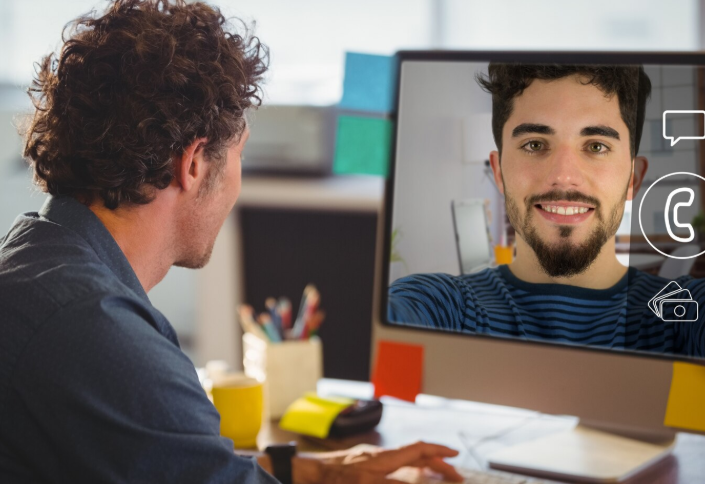Automated Video Interview: The Smarter Way to Hire Faster and Fairer in 2025

Looking to hire faster while ensuring fairness and consistency across your recruitment process? The solution lies in embracing the automated video interview — a modern, flexible, and highly scalable approach to candidate screening. It allows candidates to record answers on their own time, while enabling recruiters to review responses without the delays of interview scheduling and coordination.
As we move deeper into the digital hiring era, the limitations of traditional interviews become more obvious. Coordinating phone or live video interviews drains time and resources, and results often vary based on interviewer bias or inconsistent formats.In contrast, an automated video interview brings structure, speed, and unbiased hiring practices into the hiring funnel.
In contrast, an automated video interview brings structure, speed, and equity into the hiring funnel. This article will explore what an automated video interview is, how it functions, its growing relevance in 2025, and how platforms like Panls.ai are redefining the way top talent is hired.
What is an Automated Video Interview?
An automated video interview is a digital interviewing method that enables employers to screen candidates using pre-set questions that are answered by applicants on video at their convenience. It is a one-way, asynchronous interview format, meaning candidates don’t interact with a live interviewer in real time. Instead, they record video responses to structured prompts, which are later reviewed by recruiters.
Unlike traditional interviews or even real-time video calls, an automated video interview allows hiring teams to evaluate multiple candidates efficiently, without scheduling conflicts or human error. This format is especially useful for screening large volumes of applicants or hiring for remote roles, where coordination across time zones can be challenging.
Because of its standardized nature, the automated video interview improves consistency, reduces unconscious bias, and provides a fairer platform for all applicants. It has become a go-to tool for organizations looking to optimize hiring processes and attract high-quality talent more effectively.
How Automated Video Interviews Work
The automated video interview process is simple, but extremely powerful in its execution. Here’s how it typically works:
- The employer or recruiter sets up a series of customized interview questions relevant to the role. These can be either text-based or recorded by the recruiter.
- Candidates are invited to complete the interview on their own time. They are shown each question and asked to record a timed video response. Some systems allow re-recording, while others restrict it to mimic real interview pressure.
- Once the candidate submits their responses, recruiters or hiring managers can review the videos at their convenience. They can rate the answers, leave notes, and even share the recordings with other decision-makers for collaborative evaluation.
This model enables companies to assess candidate communication, confidence, problem-solving skills, and job knowledge — all without needing to be present in real time. Platforms like Panls.ai take this a step further by outsourcing interviews to expert panels, adding even more value to the automated video interview experience.
Automated Video Interview vs. Phone Interview
The differences between an automated video interview and a phone interview are significant. Here’s a detailed comparison in bullet format:
- Visual Cues: Automated video interviews capture body language, facial expressions, and tone — things you miss on phone calls.
- Scheduling Requirements: Video interviews are asynchronous, meaning no coordination is needed. Phone interviews require live scheduling, often delaying the process.
- Candidate Convenience: Video interviews can be completed anytime, reducing pressure and allowing candidates to perform at their best.
- Interviewer Consistency: Every candidate in an automated video interview gets the exact same questions in the same order, ensuring fairness.
- Evaluation Structure: Video interviews can be scored using rubrics or even AI-assisted analytics. Phone interviews often rely on subjective memory or incomplete notes.
- Scalability: Automated video interviews allow hundreds of candidates to be assessed in parallel. Phone interviews are sequential and time-consuming.
In every critical area — from efficiency to candidate experience — the automated video interview proves to be a far superior method for screening talent.
Key Benefits of Automated Video Interviews
Save Time and Internal Resources
With an automated video interview, recruiters can pre-screen a large number of candidates without dedicating hours to scheduling, phone calls, or note-taking. Reviewing a 5-minute video response is far quicker than coordinating a 30-minute phone call with each candidate. A technical recruiter can review interviews faster and focus on final-stage candidates.
Improve Candidate Experience
Modern job seekers value flexibility. An automated video interview allows them to choose when and where they complete their interview, leading to more thoughtful responses and reduced anxiety.
Eliminate Scheduling Conflicts
Coordinating interviews with busy candidates and hiring managers can slow down recruitment. An automated video interview removes this bottleneck, letting both parties engage on their own schedule.
Reduce Bias and Promote DEI
Since each candidate receives the same questions in the same format, the automated video interview reduces interviewer bias. This structured approach promotes diversity, equity, and inclusion (DEI) in your hiring process.
Enable Scalable Hiring
Whether you’re screening 10 or 1,000 applicants, an automated video interview lets you maintain quality and consistency at scale. This is crucial for volume hiring or seasonal recruitment drives.
Best Practices for Implementing Automated Video Interviews
To fully leverage the power of the automated video interview, companies should follow these best practices:
- Customize questions for each role to evaluate specific skills and qualities.
- Provide clear guidelines so candidates understand the process and technical requirements.
- Use structured scoring rubrics to compare responses fairly and consistently.
- Enable mobile-friendly access so candidates can participate from any device.
- Ensure accessibility features for candidates with disabilities or technical limitations.
- Review recordings in batches to reduce context-switching and maintain scoring consistency.
- Train your team to interpret video responses objectively and ethically.
- Maintain candidate communication before and after the video interview to improve the experience and maintain engagement.
By implementing these steps, recruiters can turn the automated video interview into a seamless and valuable stage of the hiring funnel.
Real-World Use Cases for Automated Video Interviews
The automated video interview is highly versatile and suits a variety of industries and hiring strategies:
- HR teams hiring at scale can quickly screen hundreds of applicants with minimal effort.
- Tech recruiters can evaluate coding and problem-solving explanations from candidates before a live technical round.
- Startup founders save time by filtering strong candidates upfront before involving the full team.
- Remote-first companies benefit from asynchronous formats that work across global time zones.
- Customer service and sales roles often require good verbal communication, which is easily assessed through recorded responses.
- Campus recruiters can streamline graduate hiring through standardized and fair evaluations.
Whether your goal is speed, quality, or fairness — the automated video interview delivers results.
Trends in Automated Video Interviewing for 2025
The automated video interview space continues to evolve, with exciting trends shaping the future of hiring:
- AI-driven scoring helps analyze tone, speech patterns, and language to support decision-making.
- Emotional intelligence analysis provides deeper insights into soft skills like empathy and communication.
- ATS and CRM integrations make it easier to link interviews with hiring workflows and candidate databases.
- Bias detection tools ensure interviews are scored fairly and ethically across different demographics.
- Voice-to-text transcription makes interviews accessible and simplifies evaluation.
- Custom branding and experience design give companies the ability to create polished, on-brand interviews.
As these innovations become standard, the automated video interview will play an even more central role in modern recruitment.
Supercharge Your Hiring with Panls.ai
Panls.ai is a cutting-edge Interview as a Service (IAAS) platform that takes the power of the automated video interview to the next level. With Panls.ai, you can:
- Outsource interviews to real technical experts who know what to look for.
- Eliminate delays caused by scheduling conflicts or overloaded internal teams.
- Ensure every candidate is assessed fairly using consistent questions and scoring frameworks.
- Seamless integration with your IT recruitment process
Ready to modernize your hiring process? Upload your job description, get matched with expert interviewers, and start hiring smarter today.
Final Thoughts
In a world where speed, objectivity, and candidate experience are crucial, the automated video interview emerges as the most effective tool for modern hiring. It reduces friction, improves fairness, and accelerates decision-making — all while creating a better experience for both candidates and recruiters.
If you’re still relying on outdated, manual screening processes, you’re falling behind. With the right platform and implementation strategy, you can unlock the full potential of intelligent, tech-enabled hiring.
Frequently Asked Questions
An automated video interview is a digital tool that allows candidates to record responses to pre-set interview questions, which are later reviewed by recruiters at their convenience.
For screening, yes. An automated video interview allows faster and more consistent evaluations without scheduling conflicts.
That depends on the platform. Some allow re-recording; others simulate real interview pressure with a single attempt.
Each candidate receives the same set of questions, under the same conditions, minimizing unconscious bias in evaluation.
Yes, especially when using trusted platforms like Panls.ai, which offer encrypted data storage and privacy controls.
Roles that require high-volume hiring, remote work, strong communication, or early-stage screening are ideal for automated video interviews.
Absolutely. Because they are asynchronous, they are perfect for international recruitment across time zones.
Panls.ai offers expert-led interview panels, scalable solutions, DEI support, and a seamless automated video interview experience that empowers better, faster hiring decisions.
